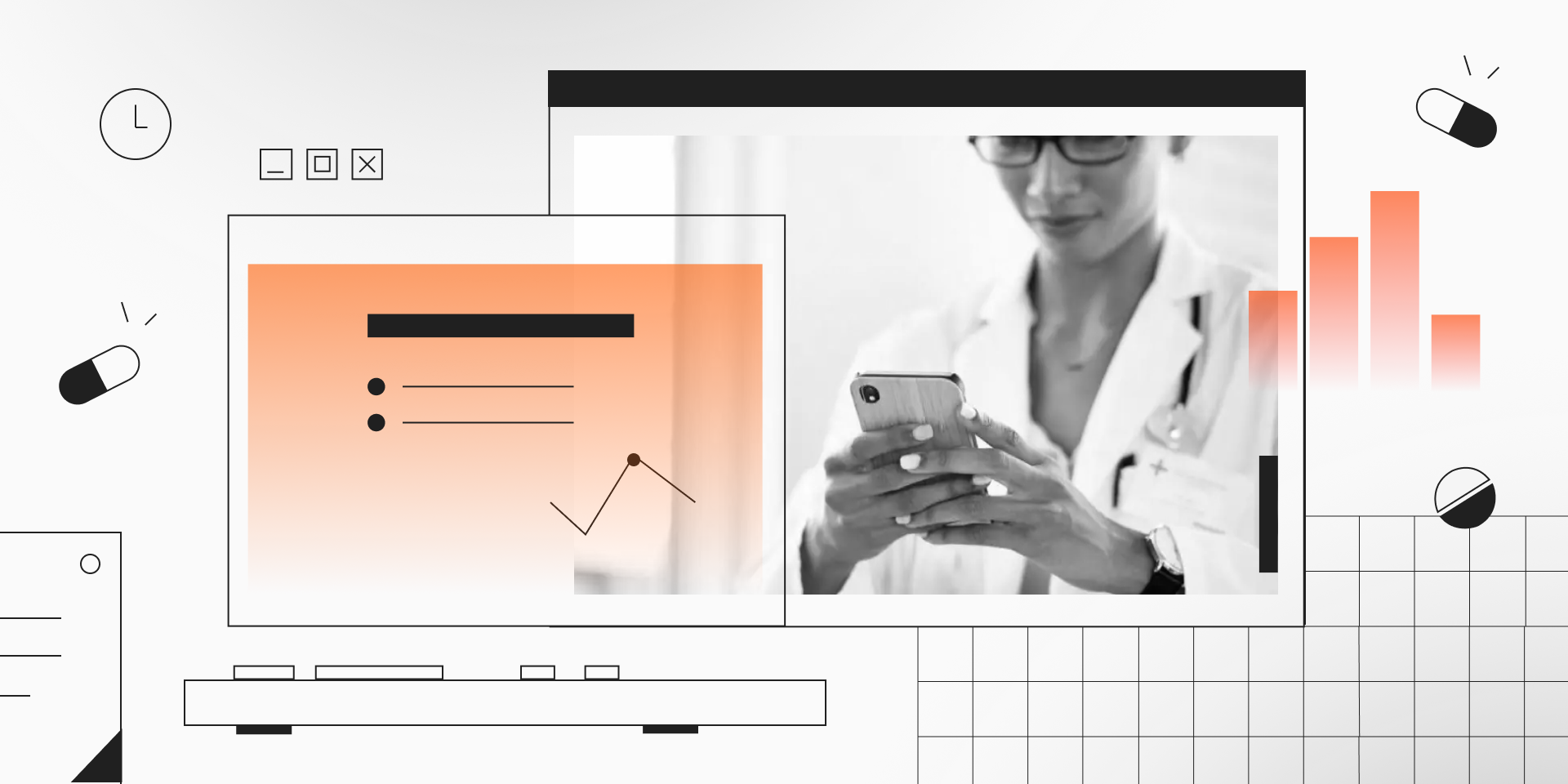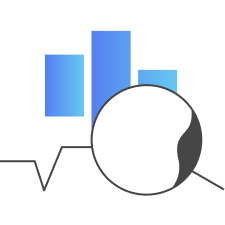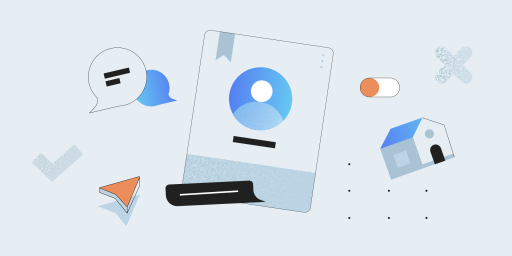Healthcare is no longer confined to clinics and hospitals — it’s in our pockets, on our wrists, and integrated into daily life. As the healthcare market embraces digital transformation, the quality of healthcare increasingly depends on the reliability of healthcare IT systems used by both healthcare professionals and patients.
For healthcare providers, testing software isn’t just about bug fixing — it’s about safeguarding lives, data, and trust. Every healthcare app, platform, or connected device must meet strict standards for security, usability, and compliance. A rigorous, well-structured QA process ensures that every healthcare experience is seamless, safe, and aligned with industry demands.
Key Takeaways
- The importance of QA testing in healthcare software lies in protecting patient safety, ensuring compliance, and enabling trusted digital care.
- Each type of healthcare software requires a tailored medical software testing approach based on its purpose, users, and risks.
- Users expect medical apps to be reliable, secure, user-friendly, and fully integrated into their healthcare workflows.
- A strong QA strategy for medical software ensures thorough, risk-aware, and regulation-ready testing across all components.
- A comprehensive QA approach includes multiple testing types, from security and regression to localization and interoperability.
- Legacy systems create integration challenges that QA must solve through custom test scenarios and regression testing.
- Risk-based testing helps focus QA efforts on high-impact areas like clinical safety and patient data security.
- Automation improves test coverage, reduces release time, and enhances product quality, yet remains underused in healthcare.
- AR/VR and medical device apps need advanced testing focused on real-world interaction, accuracy, and user safety.
- Effective healthcare QA relies on early tester involvement, collaboration with providers, mock data, and strong KPIs.
Types of Medical Software and What They Mean for QA
Healthcare software isn’t one-size-fits-all — each type serves different users, handles different data, and poses different risks. Understanding what kind of product you’re building or testing helps shape the right QA strategy from the start.
Here are some of the most common types of medical software and what they mean for quality assurance:
- Electronic Health Records (EHR). EHR systems must ensure data integrity, interoperability, access control, and compliance with HIPAA or GDPR. Regression and integration testing are crucial.
- Telemedicine Platforms. These solutions require secure, high-performance video and messaging features, often across low-bandwidth connections. Usability, performance, and security testing are key.
- Remote Patient Monitoring (RPM). RPM systems rely on stable device connectivity and real-time data sync. QA must include hardware compatibility, edge-case simulations, and fault tolerance.
- Medical Imaging Software (PACS, XDS-I). These systems handle large file formats and diagnostic accuracy. Visual validation, performance under load, and image integrity testing are essential.
- mHealth and Wellness Apps. These are often used by consumers with wearables. Testing must cover usability, data accuracy, device pairing, and compliance with mobile health regulations.
- Clinical Decision Support Systems (CDSS). This type of medical system involves complex logic and sometimes AI. Testers must validate algorithm behavior, edge cases, and auditability for transparency.
- Hospital Management Systems (HMS). HMS solutions handle workflows, staff scheduling, inventory, and billing. End-to-end testing, role-based access, and integration with EHRs are vital.
Different software types bring different risks, so every healthcare app testing project requires an approach that aligns with its purpose, audience, and data sensitivity.
What Users Expect From Healthcare Software
Medical requirements change rapidly in order to adapt to the most recent discoveries in science, which is a good thing, of course. However, this means the more advanced healthcare becomes, the higher the users’ expectations from the software get. In the days when everything is highly dependent on technology, medical device software development companies have no other choice but to meet the highest of standards. This is well reflected in custom healthcare software development: if a team wants its digital product to be useful, it has to fully correspond to the following requirements:
Reliability
Unreliable software that doesn’t perform as you expect it is always annoying, to say the least. But when it comes to the industry that deals with matters of life and death on a daily basis, the responsibility gets to a whole new level. Medical applications have to deliver error-free performance regardless of the workload or content-heavy databases. This can be achieved only through the quality-first approach to healthcare software testing and development.
Compatibility
There are three main components of any healthcare system: human factor, hardware, and software. All of these have to work in lockstep with each other in order to keep patient care effective. This explains why healthcare entities often prefer to work with a custom healthcare software development company rather than buy an off-the-shelf solution. Custom development allows practitioners to achieve a program specifically tailored to their operations instead of some average systems for average hospitals as imagined by software providers.
Ease of use (aka UI/UX)
Medical software design defines how easy it will be to use the final product, and with healthcare applications, high usability is crucial. This is because the target audience of such software is extremely diverse: from busy personnel working at hospitals to patients using apps to control their conditions, track medicine consumption, schedule appointments, etc. Not all of them have a high level of computer skills nor have the time and/or the willingness to learn how to use some sophisticated-looking programs. To avoid possible troubles, the UI/UX design of medical applications has to be clear, concise, and intuitive.
Privacy and security
One of the primary aims of healthcare software systems is to collect and store patient data. Such records are considered sensitive information so no wonder people are concerned about keeping it confidential. Data storage solutions remain one of the complex components of healthcare applications. Oftentimes, developers go for data encryption technologies like Blockchain to make the information stored less prone to attacks.
Rich integrations
Whether we are talking about healthcare software for professional or personal use, it won’t find user appreciation without useful integrations. APIs allow developers to expand the feature set of their product without building from scratch thereby saving resources and time to market. In regards to medical software development, you can find a ton of APIs designed for patients, doctors, and even scientists who contribute to the healthcare industry through studies and research (like GluVue by Stanford University).
Regulatory & conformance compliance
Healthcare services cannot be distributed without abidance by the corresponding regulatory acts and laws, like HIPAA in the United States or NHS White Paper in the United Kingdom. This especially applies to CRM systems for healthcare institutions and SaaS medical solutions. Also, healthcare software has to correspond to high industry standards and provide content that aligns with the most recent scientific discoveries and condition protocols.
Unreliable software that doesn’t perform as expected is annoying, to say the least. But when it comes to the industry that deals with matters of life and death on a daily basis, the responsibility gets to a whole new level.
Let’s give users what they want — a flaw-free healthcare app
Weaknesses to Focus on in Healthcare Software Testing
When it comes to testing, healthcare solutions stand out for many reasons because they are vastly different from most other software types. This is why, in addition to the usual focus areas of software testing, there are also potential weaknesses and vulnerabilities specific to the healthcare domain in software testing the team should focus on.
Usability issues
While functionality and integrations often take priority, usability is just as critical for healthcare software. Even the most advanced solutions must be user-centric to be effective. That’s why UI/UX evaluation should start early in testing for healthcare applications, focusing on ease of use, speed of task completion, and overall experience for typical users, including non-tech-savvy patients or medical staff.
Unstable app performance
Inconsistent performance in healthcare software can be more than just frustrating — it can interrupt care, delay diagnoses, or even endanger lives. Testing healthcare software for performance must simulate high user loads, varied devices, and inconsistent network conditions to ensure the app runs smoothly under real-world pressure.
Failure to comply with HIPAA requirements
Compliance is non-negotiable for healthcare software, especially in the U.S., where HIPAA governs key aspects like security, privacy, breach notification, and enforcement. HIPAA-focused software testing in healthcare domain helps identify gaps before release, reducing legal risks, financial penalties, and damage to your product’s reputation.
Lack of compatibility with medical software
Most healthcare applications need to integrate with systems like EHR, HMS, or MPMS. But with so many hospitals still using legacy software, interoperability is both essential and challenging. Compatibility testing for healthcare applications ensures smooth data exchange and a better user experience, regardless of the underlying tech stack.
Lack of compatibility with hardware
Healthcare software must work seamlessly not just on laptops and smartphones, but across a diverse range of medical devices and wearables. As the use of connected health devices continues to grow, testing for hardware compatibility, including fast data sync and reliable connectivity, has become a core part of healthcare domain software testing.
We have 250+ devices to test your software
Common Testing Types in Healthcare Domain Testing
Testing is the only way to ensure that the healthcare application works as required. Having outlined the user expectations from healthcare software development services, you can see there are a lot of aspects to check when working on such projects. That is why the healthcare software QA is usually a multi-level activity that tests an app from different angles. Below are the key types of software testing for healthcare applications.
Load & smoke testing
Load and smoke testing refer to the basic software testing techniques: put the developed component under some level of load (in the case of smoke testing ― under the minimal one) and document the results. Smoke testing is used at the earlier stages of development to check how a program reacts to low pressure. The actual load testing takes place later and uses more realistic or even overstated levels of workload on the product.
Data security testing
Data security testing ensures the timely discovery of weaknesses in the application’s codebase. Data security testing becomes even more crucial for healthcare solutions, which deal with sensitive healthcare information on a daily basis. If this step isn’t taken seriously, it may result in data losses, unauthorized users, hacker attacks, and other accidents that might discredit the application. Security QA is usually performed as a penetration test, a sort of staged attack on the app’s digital system. Other than checking the hack-proof quality of software, data security testing can also exploit it in many different ways to come up with scenarios that would help to repel an attack when needed.
Compatibility testing
A healthcare application is expected to work smoothly on every platform and with various types of software. And it’s worth noting that the number of possible hardware and software combinations can be staggering. This is why healthcare testing helps ensure that the software is equipped to work equally well on every platform, and that’s what device testing is all about. Compatibility testing checks how a program interacts with the ecosystem it is supposed to run on, including hardware, network, operating systems, and browsers. To check an application for compatibility, QA engineers try it on all devices, with all versions of operating systems, and in all browsers that were initially picked during the project planning stage.
Integration testing
Integration testing studies how different modules of a software system integrate with each other. Depending on the technique QA engineers choose to run integration tests ― top-down, bottom-up, functional incremental testing, sandwich testing, or big-bang one ― it can be done at different stages of development. Also, during this step, all the software modules are tested both independently and as a whole. Integration testing helps ensure that a healthcare application displays steady performance even with new units being added to the original structure.
Usability testing
This type of testing reveals how usable and ergonomic the medical software design of a particular application is. In order to make it more effective, QA teams might run UX/UI testing twice. First time, during the design phase, to reveal the unclear steps in the interface prototype, and the second time after the product’s beta version is developed. With the finalized product version, testers usually work with a focus group to get real-life feedback.
Regression testing
Continuous testing of healthcare applications must also check whether the latest testing efforts did not negatively affect the solution. Regression testing helps achieve clarity and confidence in the testing process. This type of testing is responsible for verifying the correct operation of the solution after a recent update, which happens regularly at any healthcare organization. There are plenty of testing tools to help with regression testing, and it’s one of the types of QA that do well with manual testing but can truly benefit from testing automation.
Localization testing
Localization testing is essential for solutions aiming for international reach and applies to products that are aimed to be used in different regions. Since healthcare regulations can vary greatly from country (state, province, etc.) to country, this should be reflected in the application’s local version as well. This includes such aspects of the application language, integrations widely used in the region, and even marketing strategy.
Compliance testing
Compliance testing is something that should always be included in the test plan for testing healthcare applications. This type of testing aims at making sure that the application complies with the local government regulations, which can differ greatly from region to region. If you intend to build healthcare software to be used globally, use compliance testing to ensure that you are not breaking any local laws simply due to not knowing them. For example, in the US, all healthcare applications need to be HIPAA-compliant, which means that in the US, healthcare testing requires HIPAA to be taken into account, among other things.
Interoperability and data exchange testing
In addition to functional, performance, and security testing, interoperability testing plays a critical role in the healthcare domain. Healthcare software must accurately exchange information across diverse systems and follow recognized data standards such as HL7, FHIR, and DICOM.
Testing for interoperability involves validating structured data formats, ensuring seamless communication between EHRs, lab systems, pharmacies, and insurance platforms, and accounting for variations in how different systems interpret the same standard. Poor interoperability can lead to delays, duplicate records, or clinical errors, making this type of testing vital for real-world success and patient safety.
Risk-Based Testing in Healthcare
Testing every feature equally is inefficient, especially in healthcare, where certain failures carry more serious consequences than others. That’s why risk-based testing is an essential approach. It helps QA teams and stakeholders prioritize test effort based on the likelihood and impact of failure.
In the healthcare domain, risk-based testing typically considers factors like patient safety, legal compliance, data sensitivity, and business continuity. For example, a failure in a medication dosage calculator has a higher risk rating than a UI layout issue in a non-critical admin portal.
Risk matrices, failure mode and effects analysis (FMEA), and other tools help teams identify high-risk areas and allocate resources accordingly. This approach ensures that testing time is used effectively, focusing on features where defects could lead to harm, liability, or system downtime.
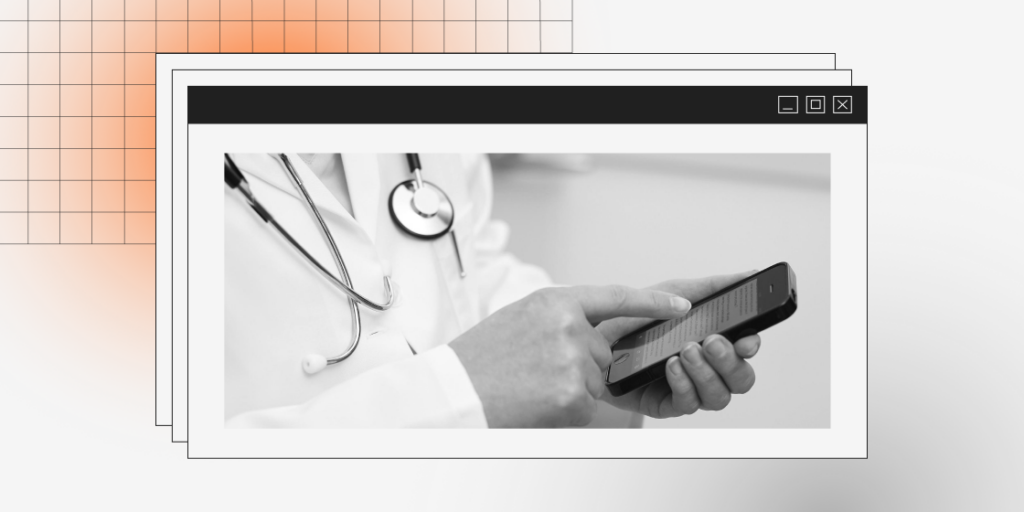
Automated Healthcare QA: Why and How to Automate Healthcare IT Testing
Test automation has long been one of the most vital developments in the software testing industry. Ever since QA teams started automating testing, they have been noticing a stark difference in both the process and the outcome of testing. Naturally, a task as resource-intensive as QA testing in healthcare is also a perfect fit for automation, helping solve a number of challenges and bringing additional benefits to the product stakeholders:
- Higher test coverage. Automation helps you dramatically increase test coverage, allowing you to include test cases that would often be skipped due to the lack of resources for manual testing. This helps you test more scenarios, even ones that seem unlikely at the moment.
- Faster time to market. Automating the testing process delivers results faster, which allows you to test earlier in the SDLC, detect and correct issues at a higher rate, and time your releases better to beat your competition in the market.
- Better interoperability and cross-platform compatibility. Medical software is usually designed to operate on a myriad of platforms and work together with a myriad more of medical software and hardware products, and automation helps account for more possible combinations than manual testing.
- Higher ROI of testing. Automated testing is often associated with an elevated need for resource investment, and it’s true in the early stages of automation where the team needs to set up the entire process. However, the longer automation continues, the higher the ROI of testing is going to be.
- Increased quality of products. The benefits of automated testing are too numerous to list them all in one article. But, at the end of the day, we test software to create more functional, stable, secure, and usable products, and that’s exactly what automation helps achieve.
Right now is the perfect time to invest in automated software testing in healthcare: despite the level of innovation that has always been present in medical software, the industry is still falling behind on the automation trend. Only 15% of healthcare software providers embrace automated testing, which means that whoever starts automating right now will get an upper hand, releasing better-quality software at a faster rate.
Testing AR/VR and Medical Device Applications
As healthcare adopts immersive technology — like AR-guided surgery, VR-based therapy, and connected diagnostic devices — testing must evolve to cover new dimensions of performance, usability, and safety.
Unlike traditional apps, AR/VR software interacts with physical space, patient motion, and real-time sensory feedback. Testing must account for latency, visual accuracy, device calibration, and user disorientation, especially in clinical settings. Accessibility testing is also critical to accommodate users with visual, auditory, or cognitive impairments.
When AR/VR apps are integrated with medical devices, QA teams must test hardware/software interaction, sensor accuracy, data capture integrity, and compliance with regulations for medical-grade products. Simulated environments and digital twins can be used to replicate real use cases before live deployment, ensuring safe and effective patient care.
Secure, Compliant, Reliable Software.
That’s what you get with our healthcare testing services.
Key Challenges in Healthcare App Testing
The latest healthcare developments make it clear that the healthcare industry is growing at a brisk rate. Timely and all-encompassing healthcare software testing helps make sure that you, as a product owner, don’t stay behind the rapidly developing industry. And part of that is being fully aware of the healthcare software testing process, including its challenges and limitations. Here are the issues you can face when healthcare testing is conducted.
User-friendliness
One of the specific challenges of healthcare domain testing includes the fact that healthcare applications are designed for a wide category of users, including patients of older age who may not necessarily be tech-savvy. This means that the team responsible for healthcare IT testing must test the product from different perspectives, meaning even the most improbable test case may turn out to be essential for the success of the whole operation.
Interoperability
In healthcare software and medical device software testing, there were times when interoperability was merely a best practice, not a requirement. During these times, desktop application testing was the main QA activity in healthcare. Then teams gradually started doing healthcare mobile app testing along with desktop testing. However, things changed the most when medical applications became available on a wider range of platforms. These days, interoperability is essential for QA testing in healthcare. What makes the interoperability aspect particularly challenging is that the range of devices in healthcare testing isn’t just limited to desktop computers and mobile devices, as both hospitals and patients use a myriad of heavy equipment, sensors, wearables, and other electronics for data transfer, which means that the test cases for healthcare application testing must account for all potential combinations.
Security
Patients use medical applications to communicate with their healthcare providers about the most sensitive subjects, so there is no room for error when it comes to the security of the solution. For the testing team, it means not only evaluating every aspect of the solution to ensure its absolute security, but also keeping sensitive information safe in the process. Many QA teams and companies now use non-invasive testing techniques, which involve testing without gaining access to private information within the application or sensitive parts of the code base.
How to Make Your Healthcare Solution Compliant
Regulatory compliance isn’t exclusive to healthcare — industries like finance and banking also face strict oversight. Most software products must meet general standards such as the GDPR in Europe. However, what sets software for healthcare apart is the sheer number, complexity, and regional variation of the regulations involved.
In the U.S., compliance typically starts with HIPAA, which governs the protection of personal health information. But healthcare products must also align with technical and interoperability standards such as HL7 (Health Level 7), which facilitates data exchange between healthcare systems; FHIR (Fast Healthcare Interoperability Resources), which defines data formats and APIs for EHRs; and XDS/XDS-I, which support cross-enterprise sharing of health documents and medical images.
If your healthcare app will be available internationally, you’ll need to account for global data privacy laws. These include PIPEDA in Canada, Privacy Act 1988 in Australia, Health Data Law 2019 in the UAE, and guidance from the European Commission’s Directorate-General for Health and Food Safety. Each region has its own expectations for how health data should be handled, stored, and shared.
Making healthcare software compliant means more than just checking off legal boxes. It requires ongoing testing and validation to ensure data security, privacy, and safe system behavior under all conditions. This is where an experienced testing partner for healthcare compliance becomes essential, helping you identify relevant regulations, create realistic test cases, and ensure your product is fully compliant before release.
Ethical and consent management testing
Compliance doesn’t end with HIPAA or GDPR. Ethical data use and proper consent management are just as critical, especially as patients become more aware of how their health data is handled.
Testing consent-related features includes verifying that users can give, revoke, and manage consent easily, and that consent status is correctly enforced across the application. This may include opt-in/opt-out workflows, anonymization features, and audit logs for transparency.
It’s also important to test ethical scenarios, such as preventing unauthorized access to sensitive information or avoiding “dark patterns” that push users to give up more data than necessary. These practices build trust with healthcare professionals and patients while aligning with emerging legal and ethical standards.
Integration with Legacy Systems, Backend Modernization, and How They Impact QA
Modern healthcare apps rarely operate in isolation. Most hospitals, labs, and insurers still rely on legacy systems — decades-old infrastructure running on outdated technologies with limited interoperability. For testers and decision-makers, this creates a major challenge: ensuring that the new system integrates smoothly without disrupting essential operations.
Testing software for healthcare providers often involves verifying integration with EMR platforms, lab management systems, or insurance processing tools built on older architectures. These systems may lack standardized APIs, have incomplete documentation, or behave inconsistently under load. Testers must therefore design custom test scenarios that simulate real-world data exchanges, edge cases, and system behavior under stress.
Backend modernization also brings risks: replacing or refactoring outdated systems may introduce instability if legacy workflows aren’t properly mirrored. QA teams must run comprehensive regression testing to ensure data integrity, workflow continuity, and compliance with existing policies. Automating integration testing and adopting service virtualization can further reduce risk and improve test coverage.
We will take your app’s quality from good to great
Working With a Vendor for Healthcare QA: Key Insights
Healthcare software quality assurance is such a complex, time-consuming, and labor-intensive task that only the biggest companies with the largest staff can afford to keep their testing operation in-house. Everyone else has to go for an alternative method of testing their software, and outsourcing software testing in healthcare is currently the most popular solution.
Needless to say, you cannot just randomly pick a QA vendor and entrust them with something as significant to your business reputation as testing a healthcare software product. The vendor for this task needs to be picked very carefully: most importantly, they need to have relevant experience in healthcare IT testing and a thorough understanding of what needs to be done. A portfolio of relevant cases will tell you a lot about it, as will the content the vendor publishes regarding healthcare software solutions.
Vendor management: How to make the most of your cooperation
Choosing the best possible vendor for your healthcare QA project is only half the battle. The other half is building the collaborative process to ensure maximum benefits to your company. Here are some tips for managing the project like a pro:
- Invest time in contract negotiation. One of the best ways to ensure the success of an outsourced testing project is to allocate time to negotiating the right contract for your needs. When it comes to healthcare projects, it’s important to include provisions regarding HIPAA compliance and extra security measures to protect sensitive patient information in addition to the usual provisions like team roles and responsibilities, project scope, deliverables, timelines, and costs.
- Introduce project management and communication tools. A vital benefit of working with an outsourcing partner is that you get to call all the shots, and that includes using your preferred project management and communication solutions. Have the vendor adjust to your communication needs, not the other way around. You can not only choose the tools you want to use, but also set the communication schedule, the preferable format for reports, the work schedules, the milestones, and so on.
- Create a culture of continuous improvement. Healthcare testing projects are usually designed to last for months, if not years, since there is so much to test. This is why, as the application progresses, your vendor’s approach needs to do the same. To achieve this, you’ll need to introduce performance metrics and feedback mechanisms to regularly evaluate your vendor’s work and communicate your findings to them. Point out the strengths and weaknesses of the vendor in a specified period of time to create a continuous improvement process that will ultimately benefit every participant.
- Don’t let technical debt build up. Technical debt is perfectly normal on a software testing project. However, it does become a problem when there is too much of it. A reliable vendor will always notice, encouraging you to take steps to eliminate it. A vendor who lacks integrity or technical proficiency will let the debt grow, which can result in a string of problems down the line, including the product shutting down, temporarily or permanently, due to the accumulated issues. Attitude towards technical debt is a good way to evaluate a QA vendor in general.
- Enforce strict documentation practices. Documentation is a vital component of a software testing project, and is even more important for healthcare IT testing. Documentation is useful both throughout the duration of the project and afterwards, or when you decide to employ another vendor for the next phase of the project. This is why you need to request the vendor to create and maintain detailed documentation. Moreover, a good QA vendor will actually study your existing documentation first, notifying you of any gaps and assisting you in filling those gaps.
How we achieved a 36% reduction in test execution time for a healthcare document management platform: An in-depth case study
Tips and Best Practices for Healthcare Application Testing
Testing products in the healthcare domain is often a challenging task because of how much is at stake and how different healthcare apps are from other types of software. Still, the testing phase is integral for releasing high-quality applications, and here are a few practices and best tips for achieving even more with your testing project.
1. Get a thorough understanding of the healthcare system
Before you take any active steps to test your healthcare product, it’s vital to ensure that you know exactly what that entails and what the healthcare software industry currently needs. You need to know what kinds of apps are out there, how they work on their own and when integrated with each other, what users — healthcare providers and regular people — are looking for in a five-star application, and what kind of laws and regulations govern healthcare apps in your chosen location. It’s also crucial to make that research not a one-and-done occasion, but consciously make an effort to stay on top of new trends and developments.
2. Cooperate With Healthcare Providers
Software testers will do an excellent job of ensuring the spotless technical state of the application, using their expertise in QA to scrutinize every possible technical aspect of the product. However, no one has more insights about the functional and usability sides of the application than the people the app is actually intended for. Creating close collaborations between healthcare providers and testers, and including healthcare professionals in the testing process, delivers stronger results and helps create products the target audience wants to use.
3. Get testers involved early
There are currently different approaches regarding where to start testing in the software development lifecycle. Some teams follow the Waterfall model and begin testing only after the product development is completed. Others follow Agile practices and the shift-left approach, moving testing to the earlier stages of the SDLC. An approach that has proven to be even more effective, however, is involving the testing team already at the requirement elicitation stage. The team will confirm that the requirements are consistent and testable, kicking off the quality assurance process and overseeing the creation of a stable, flaw-free product.
4. Use mock data in healthcare testing
Performing software testing on a completed or nearly completed product typically requires large sets of data to test different scenarios and use cases. Many teams use real patient data to make the testing process more realistic, but the truth is that using real data can jeopardize the integrity and security of sensitive patient information in case there are undetected gaps in the product’s security. Using mock data in the corresponding format gives just as much insight into how the application works without putting patient safety at risk.
5. Measure testing effectiveness with KPIs
We all know the general goal of testing: to create high-quality, functional products with great usability, solid performance, and unparalleled security. But how exactly do you evaluate the success of the testing process before you can get any feedback from actual users or assess your market positions? The good news is that you can use a set of testing KPIs at all stages of the QA process to know if it’s going well and what needs to be changed to improve it. Common healthcare domain testing KPIs include:
- Total number of test cases created, updated, and executed
- Average number of test cases created, updated, and executed over a certain period of time
- Requirements coverage
- Defects found and rejected
- Defects leaked
- Ratio of reopened issues to resolved issues
- Time and money spent on testing over a certain period of time
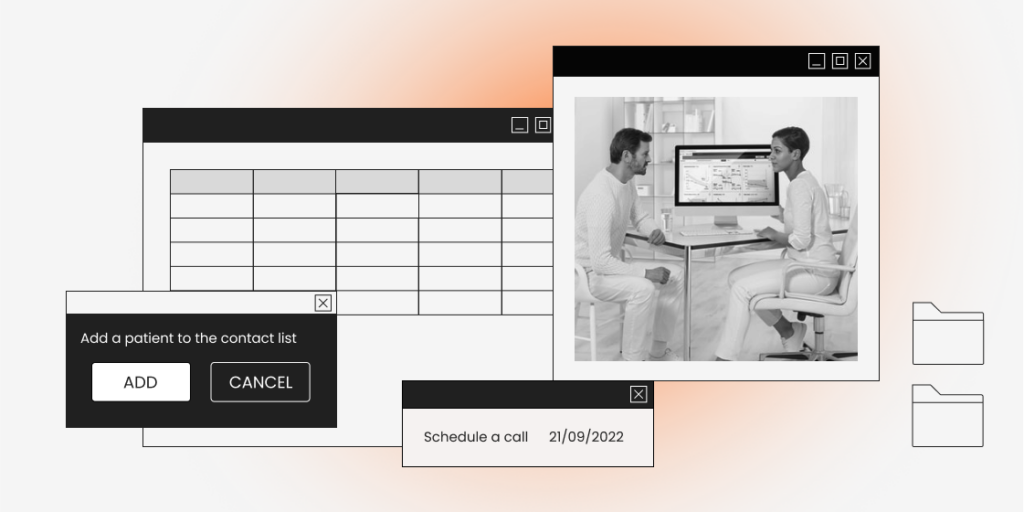
Final Thoughts
We are not here to tell you that testing medical software is more important than testing activities with other types of software. At the same time, the cost of failure for a medical application is significantly higher than that of most other products. If you’re not willing to take that risk, testing early and testing in full is the only way to keep critical issues at bay, improving the usability and security of the product, and giving it a significant advantage in the increasingly competitive market.
Medical software testing might seem overly complex, but the complexity of the healthcare domain testing comes from the fact that the healthcare software testing team has more responsibility behind this process is even higher compared to other projects. The described above steps and techniques aimed at polishing a medical application to the point the release of it would be valuable for the industry, useful for clinicians, and relieving for patients. Our background with medical and healthcare applications taught us to never settle for less than an A to Z tested application before the release, as well as ongoing improvement and post-launch support, so you can safely entrust us with your healthcare software testing project and expect a stellar result.
Frequently Asked Questions
 What is software testing in healthcare?
What is software testing in healthcare?
Healthcare software testing is the process of verifying that a healthcare application functions correctly, securely, and reliably across different environments and user roles. It covers functionality, performance, security, accessibility, and compatibility to ensure that patients, hospitals, healthcare providers, and insurers can depend on the solution for high-quality care and safe data exchange.
 Which software is used in hospitals?
Which software is used in hospitals?
Hospitals and clinics rely on many types of healthcare software applications. Common types of software used in the healthcare business include Electronic Health Records (EHR), telemedicine platforms, Personal Health Records, Remote Patient Monitoring, mHealth apps, medical billing systems, and health tracking tools. Some applications are also designed specifically for testing, diagnosing, and treating patients.
 What are some common challenges in testing healthcare applications?
What are some common challenges in testing healthcare applications?
Testing in the healthcare domain is complex due to strict regulations, the need for constant accessibility and stability, and heightened security in healthcare. Key challenges include ensuring compatibility with various devices and systems, navigating complex healthcare architectures, and meeting multiple compliance requirements across regions.
 Which types of testing are often used for healthcare QA?
Which types of testing are often used for healthcare QA?
The most appropriate testing types for healthcare solutions depend on the functionality and purpose of the application. Typically, a comprehensive testing strategy when it comes to healthcare testing must include functional testing, performance testing, usability testing, compatibility testing, accessibility testing, integration testing, and security testing.
 What is the software testing budget for healthcare?
What is the software testing budget for healthcare?
There’s no fixed budget for healthcare application testing — it depends on the project’s scope, regulatory requirements, and risk level. However, due to the critical nature of healthcare applications, testing can account for 25-40% of the total development budget to ensure compliance, data security, and software reliability.
 What is UAT in healthcare?
What is UAT in healthcare?
User Acceptance Testing (UAT) in healthcare is the final phase of testing where real users — such as healthcare professionals or administrators — validate that a system meets their needs and works as intended in real-world scenarios. UAT testing services for healthcare systems help ensure that the software supports clinical workflows, complies with regulations, and is ready for deployment in a live environment.
 What are QA strategy services for healthcare systems?
What are QA strategy services for healthcare systems?
QA strategy services for healthcare systems involve creating a structured, goal-driven plan for testing medical software, tailored to its functionality, regulatory requirements, data sensitivity, and user needs. These services help healthcare providers align testing with clinical priorities, choose the right mix of manual and automated testing, and ensure consistent quality throughout the software lifecycle.
Jump to section
Hand over your project to the pros.
Let’s talk about how we can give your project the push it needs to succeed!
